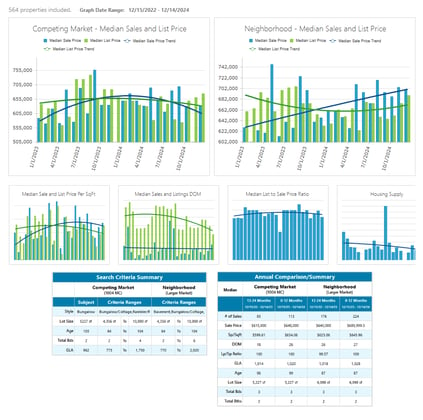Navigating the Changing Landscape of Appraisal Standards: Fannie Mae & Freddie Mac
The appraisal industry is undergoing significant transformations as Fannie Mae and Freddie Mac update their guidelines and introduce new standards for market analysis and reporting. These changes aim to enhance clarity, accuracy, and the reliability of appraisal reports, aligning the process more closely with current market trends and data requirements. Here are some key takeaways and actionable insights from a recent webinar discussing these updates.
Why the Changes Matter
For appraisers, understanding the latest guidelines isn’t just a matter of compliance—it’s an opportunity to refine practices and deliver reports that meet the highest industry standards. One significant shift is the redefinition of neighborhoods as "market areas," which emphasizes analyzing market boundaries and characteristics that truly affect property value.
Another critical update is the requirement for appraisers to base housing trends on a minimum of 12 months of data. This ensures that trends reflect overall market movements rather than short-term fluctuations, providing a more comprehensive picture of market dynamics.
Market Analysis: A Deeper Dive
The updated selling guides introduce clearer expectations for market analysis, particularly regarding time adjustments, or as they’re more accurately termed, market adjustments. Appraisers must now:
- Analyze Market Trends: Use data from sources like home price indexes, MLS, or other statistical tools to evaluate how market conditions have changed.
- Focus on Contract Dates: Time adjustments are now explicitly required to be based on the contract date of a comparable sale, not the sold date. This adjustment aligns appraisals more closely with real-time market conditions.
- Support Adjustments with Evidence: Whether you’re applying a market adjustment or choosing not to, your decision must be supported by clear evidence and documentation.
Tools and Techniques
Modern tools like DataMaster are becoming essential for appraisers aiming to meet these updated standards. DataMaster streamlines the process by integrating MLS data and providing statistical analyses, graphs, and charts to support market trends and adjustments. Features like its market analysis tool allow appraisers to:

- Examine competing and broad market data sets.
- Analyze trends over custom timeframes, including up to five years, retrospective.
- Apply precise adjustments to comparable sales based on the appraiser's specified datasets.
Practical Advice for Appraisers
- Expand Your Data Sources: Include all listing statuses, such as canceled, expired, and withdrawn listings, to get a comprehensive market view.
- Define Your Boundaries: Clearly delineate your market area boundaries and justify your selection criteria.
- Report Search Criteria and Results: Document your search criteria and summarize the results, including the number of listings, sold properties, active properties, days on market (DOM), and other relevant metrics to strengthen the credibility of your analysis.
- Engage with MLS Changes: Be proactive about verifying concessions and other critical details with agents, especially as MLS platforms adapt to the National Association of Realtors (NAR) settlement.
- Adopt New Practices Early: Start incorporating these guidelines into your workflow now to avoid surprises when the new appraisal report format becomes mandatory later this year.
What’s Next?
As the appraisal industry adapts to these updates, it’s crucial to stay informed and embrace the tools and methodologies that make compliance seamless. The transition to a new appraisal report format beginning September 2025 underscores the need for appraisers to be proactive, ensuring their practices align with evolving standards.
With tools like DataMaster and a commitment to continuous learning, appraisers can not only meet these requirements but also enhance the credibility and value of their work in an increasingly data-driven industry.



Be the first to know when we post a new blog post.